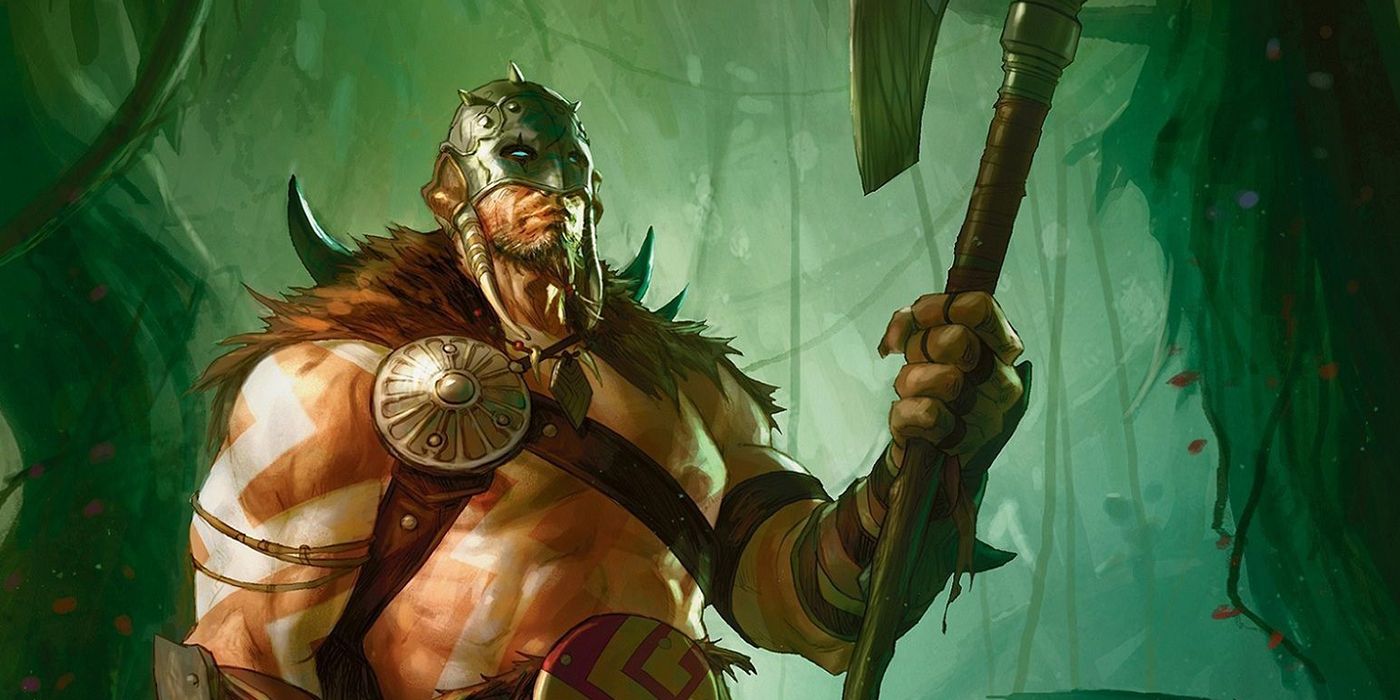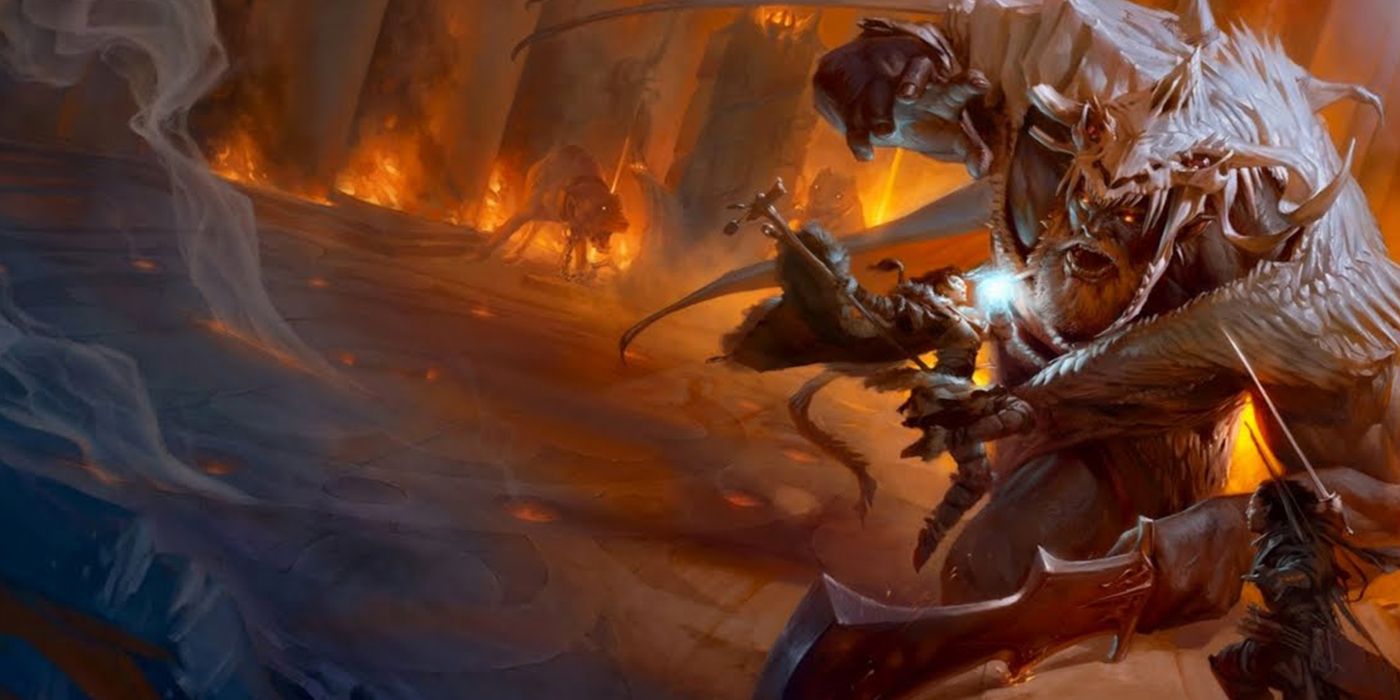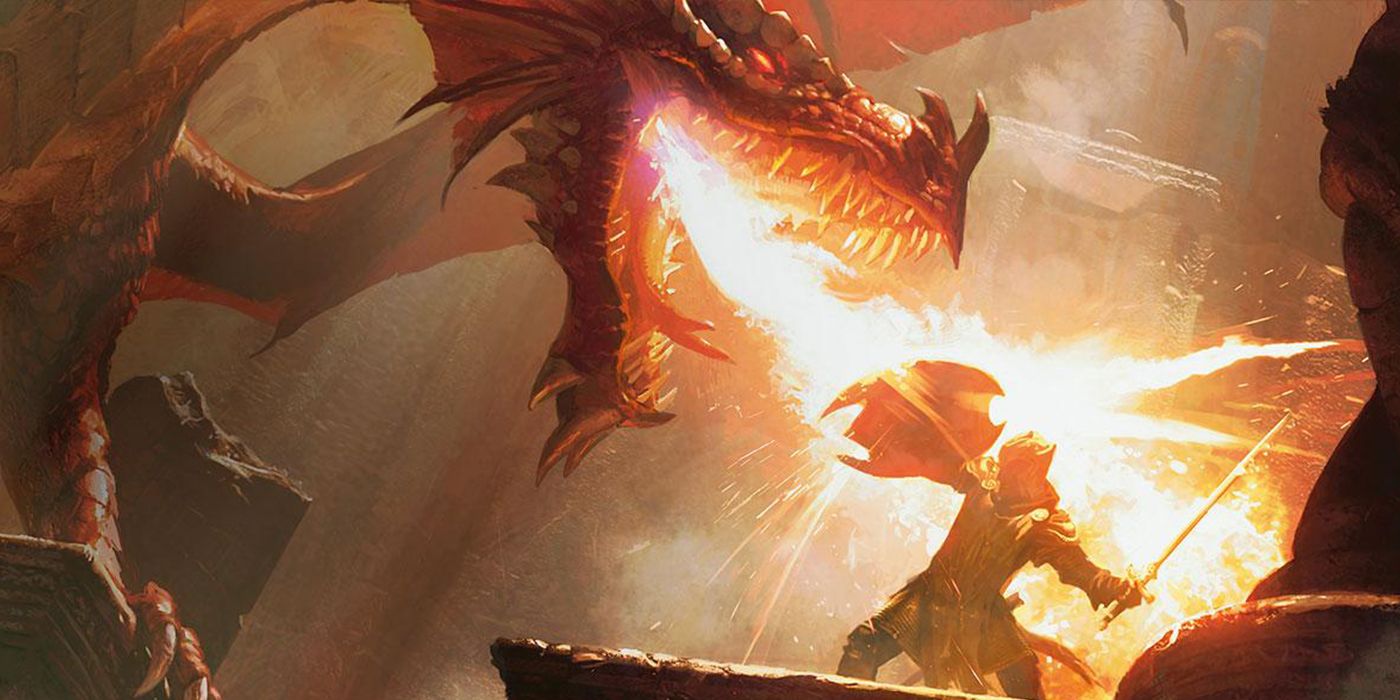It's time to build a new Dungeons & Dragons character. The class of choice? Barbarian. As with any D&D class, there are many ways to build a barbarian warrior—but only a few ways to make that barbarian the absolute best rage-monster they can be. So here's a handy step-by-step guide on how to maximize a barbarian's raw natural power on the battlefield during character creation.
Barbarians are an inherently strong D&D class. Their health pool is immense (they get to use the biggest hit die possible), and they make for ideal strikers and defenders on the battlefield. The main difference between a barbarian and a fighter? Fighters are versatile and more precision-based, while barbarians are intended to be a sheer force of nature.
Picking a Race
First up during character creation is picking a race, and there are a few choices that are well-suited to a barbarian's skillset. Of course, there are the common picks like dwarves, humans, and goliaths, but half-elves and Dragonborn are great too if done properly.
There's the dwarf, which is kind of seen as the "standard" race for making barbarians, but with good reason: mountain dwarves get a +2 bonus in strength and constitution, the two stats that a great barbarian can't exist without. As with any class, humans could also make an effective barbarian based on their sheer versatility; players can choose their stat bonuses and feat variants during creation.
Half-orcs and goliath half-giants are also a great fit for barbarians. Half-orcs get a +2 to their strength and +1 to their constitution, in addition to race-specific abilities Relentless Endurance and Savage Attack. Goliaths, as everyone saw on the famous D&D series Critical Role, get the same useful strength and constitution bonuses as the half-orc, and also get three race-specific abilities that complement a barbarian perfectly: Natural Athlete, Stone’s Endurance and Powerful Build.
For players looking to pick a less-conventional race, here are two that can make for surprisingly fantastic barbarians: half-elves and Dragonborn. Both receive bonuses to charisma that is usually wasted on a barbarian, but half-elves also get to choose their bonuses in two other stats, along with dark-vision, fey ancestry, and two skills of choice. Dragonborn, meanwhile, get a useful bonus to strength, natural resistance to one type of damage, and a breath weapon based on their constitution score—all traits that a barbarian could make great use of in any campaign setting.
Assigning Ability Scores
Race and class (naturally) have been selected, so now it's time to assign the barbarian's ability scores. Strength and constitution are, as previously mentioned, a barbarian's biggest priority. When building a warrior know for the power of their attacks and the sheer amount of damage they're able to soak up, players will want the barbarian's stats to reflect that. After that, players should make dexterity their next priority; it's a common saving throw they'll have to make against enemies and other D&D creatures, and it boosts AC—which barbarians, who don't wear armor, could definitely use.
Below those, there's wisdom: it's worth not making wisdom a dump stat, because of how common wisdom saving throws are. Plus, perception is always useful, and it's based on wisdom. Charisma isn't really something that any party looks to their barbarian to have in spades, but it's all right if players want their barbarian to have a little extra Intimidation on hand.
Finally, there's intelligence, and that's the barbarian's definite dump stat. Intelligence saving throws are rare, and barbarians really don't have any intelligence-based skills, so there's no reason to give this ability anything but the lowest score. And no, barbarians with low intelligence don't have to play into that "total moron" stereotype; it just means they're not the academics of the group, which was never going to be the case, anyway!
The Best Weapons
There are two ways to go when it comes to a barbarian's weapons: a huge two-handed weapon that offers fewer attacks but more damage per attack, or a dual-weapon style that lets the barbarian take more attacks, starting with two attacks per round right at level one.
Having one attack per round isn't that much fun, but the damage numbers will speak for themselves as soon as the barbarian starts swinging. Barbarians get Reckless Attack starting at level two; combine that with a greatsword or greataxe (which uses a d12 damage roll) and the barbarian is already shaping into an awesome tank. Plus, barbarians do get a second and third attack eventually. Players who can be patient for a few levels will soon be dealing out massive amounts of damage in one devastating hit.
Fighting with two weapons has its benefits too: with the rage damage bonus and an extra attack per round, two-weapon barbarians can hit hard and often. Reckless Attack won't be as needed with more attacks, which also means the barbarian will get hit less since enemies won't get advantage on their next attack either.
Selecting a Subclass
Barbarians get to choose their Primal Path once they hit the third level. Not only does that play a big role in the barbarian's powers going forward, but it's also a big decision in terms of adding some roleplaying flavor to the barbarian's abilities. There are six Primal Paths available to barbarians right now: Path of the Beserker, Path of the Zealot, Path of the Totem Warrior, Path of the Battlerager, Path of the Ancestral Guardian, and Path of the Storm Herald. Two of those rank far above the rest in terms of the raw power they lend to the barbarian.
The most powerful barbarian path, hands-down, is the Path of the Totem Warrior. Of course, after selecting this path, players will also have to choose the animal for their totem—all of which offer unique abilities at 3rd, 6th and 14th level. But once again, the winner when it comes to power is the bear totem, which gives the barbarian resistance to all damage types except for psychic. Basically, a bear totem warrior with ample strength and constitution is the aforementioned rage-monster with heavy hits, tons of HP, and resistant to whatever comes their way. Players can't go wrong.
Another powerful choice is the Path of the Zealot, the subclass that makes a diety the source of inspiration for a barbarian's battle fury—and the only deities who do that are ones of "combat, destruction, and violence." As such, this subclass is rarely one for good-aligned characters. However, the Zealot path focuses on letting the barbarian do even more damage in combat and making them almost impossible to permanently kill. Just remember that players may need to get some of these separately, as they fall outside of the D&D essentials.
Adding Feats
As the barbarian levels up they'll get to choose more feats. Given that there are so many feats available, here's a narrowed-down list of feats that work great with barbarians. First, there's Great Weapon Master—and that one is just a must, plain and simple. Sentinel is another feat that bear totem barbarians, in particular, should definitely take; it turns them into more reactive warriors with the ability to stop an enemy in their tracks.
Lucky is a useful feat to have around for barbarians who really want to make sure their hits land, and having three extra d20s saved for a bad roll is always useful regardless of class. Resilient can help to improve certain defenses, but it's really only worth taking if the barbarian needs some help making one type of saving throw.
With all that, players should be able to turn their barbarian into a pinnacle of the class. As a bonus, players who pick the soldier, folk hero, or outlander backgrounds can make good use of them with this class; with the choices outlined above, that barbarian will be the unstoppable juggernaut promised for any Dungeons & Dragons 5th edition campaign.



